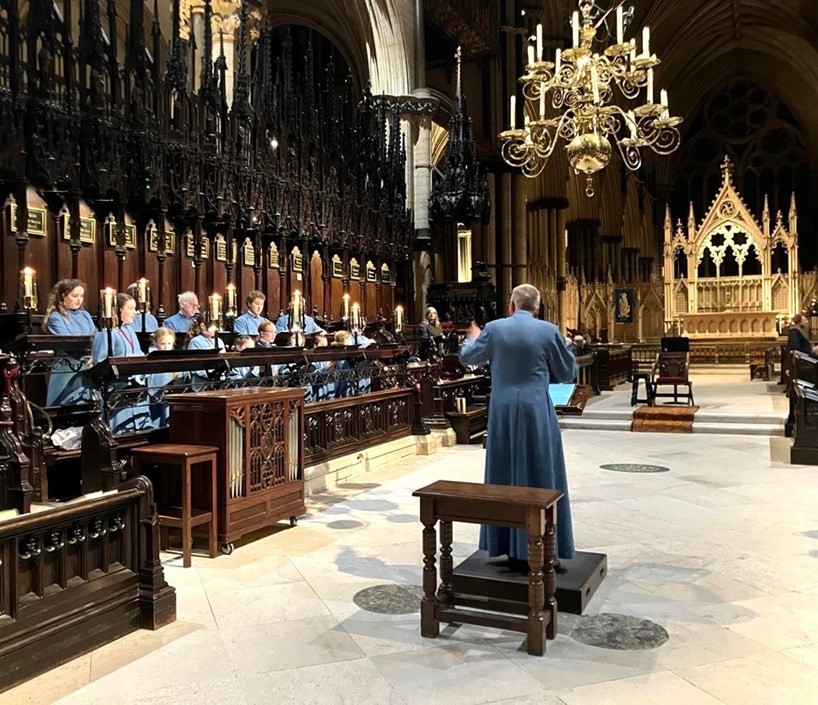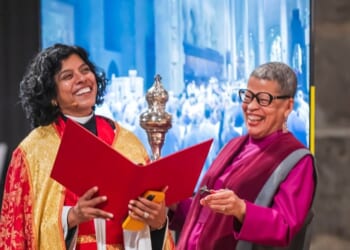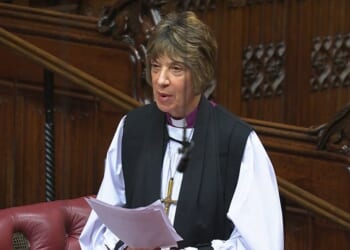LINCOLN CATHEDRAL will be celebrating a milestone in its musical history this weekend: the 30th anniversary of the introduction of girl choristers. They first sang on 21 November 1995, St Cecilia’s Day, the festival around which this weekend’s celebrations have been planned.
Colin Walsh was the Master of the Choristers under whom the change was made. Boys had sung since 1265. Lincoln followed Salisbury in pioneering equal opportunities for boys and girls, who were educated at the Cathedral School.
At the time, the introduction of girls was still new enough to be considered by some a sacrilegious move; there was a lingering perception that girls’ voices could not match boys’ in purity. There was also parental anxiety that the move might diminish boys’ opportunities to sing.
The present Director of Music and Master of the Choristers, Aric Prentice, took over in 2003. By then, the girls had enough repertoire under their belts to sing half of the time. There are now 20 boys and 20 girls in one cathedral choir — there is no “boys’ choir” and “girls’ choir” — and, reflecting on those early perceptions, Mr Prentice said: “My general view has always been that 20 different children sound different from 20 [other] children. It’s not so much a factor as the age at which they’re singing.”
The choristers are now drawn from 17 local schools. Services are equally divided between the boys’ and girls’ sections. Parallel morning rehearsals are held between 7.55 and 8.40 on Mondays, Tuesdays, and Fridays, when parents drop the children off, and the cathedral takes responsibility for getting them to school.
“To achieve those morning rehearsals when we get so much done, we have a whole logistics enterprise of our own, involving all our choral scholars and full-time members of staff,” Mr Prentice said. “We have minibuses, taxis, shuttles, chaperones; we have some walking routes for nearby schools. It’s a wonderful and powerful thing, being a chorister, and, by this means, we have been able to protect that.” Applications from girls outnumber applications from boys, as is the norm for singing activities in general.
Lincoln was a particularly lovely place to sing, he said. “The combination of voices sounds absolutely wonderful in this building. The acoustics really support that: there’s a glow on all the music you make. Choristers quickly get a real love for what they do.”
 Lincoln CathedralGirl choristers at rehearsals in Lincoln Cathedral this week
Lincoln CathedralGirl choristers at rehearsals in Lincoln Cathedral this week
Naomi Goodall (née Line) was one of the first eight girls to be recruited in 1995. “It was really clear early on that we were part of something much bigger and greater than ourselves as individuals,” she reflected.
“When we arrived and started practising, we knew the boys were doing the same, and we would listen to them. We really looked forward to having our chance to perform, and the boys were really friendly and encouraging. There was definitely a sense of camaraderie, and we didn’t feel any hostility.
“In the early days, there were girls’ pieces and boys’ pieces, to allow us come together, I think, and reach that level of training. The very first time we sang with the back row was the most brilliant sound and feeling. It felt like a really monumental day. And, when the music stopped being differentiated, we were able to do things that were much more similar and aligned.
“It’s the size of Lincoln, and the gravitas, and learning how to fill that space, especially as a soloist, that makes it so very special.”
Emma Andrews (née Ferag) was in the second intake. By then, girls were less of a novelty. “It still felt quite pioneering, though,” she said. “Obviously, the boys had become quite an institution, and there was definitely a kind of undertone of its still being a new thing to get used to.
“But the great thing about being with children of the same age is that those kind of feelings evaporate quite quickly. I was at the boarding house, and obviously we’d eat meals together. It didn’t make sense to have any hostility. We were all working to the same thing. And I think the boys realised that, now the girls were singing, they got to have some weekends off, and were more free to do other things as well.”
She remembers the intensity that came with the first time of singing in the stalls. “To be in that situation, and to feel the spotlight is on you, was a really good feeling,” she said. “I literally had some of the best days of my life in the choir.”
Niamh Halliday is about to leave the choir after seven-and-a half years. Having never known a time when there were no girl choristers, she has no experience of any misgivings. “Society has changed so much in the last 100 years,” she said.
Of the experience of singing at Lincoln, she said: “Sometimes, I can look at it and forget it’s such an awesome building, because I’ve got so used to it. But other times, I think, ‘This is such an amazing thing.’” Of the rigorous early-morning routine that she has had throughout her childhood, she said simply: “It gives you commitment, and helps you plan your life.”
Lincoln Cathedral puts on Handel’s Messiah every year on the Saturday closest to St Cecilia’s Day. Former choristers will sing some of the solos this year, and a new anthem has been commissioned for evensong on Sunday from Paul Edwards: King of Glory, King of Peace — the text by George Herbert, sometime Canon of Lincoln.

















